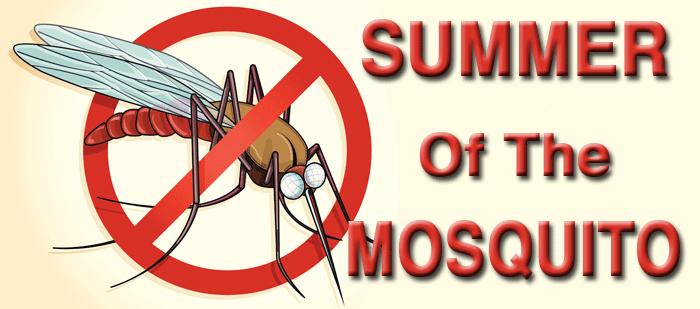
 o
you remember your last trip to the doctor or dentist of your choice?
Or sitting idle in the airport lounge while waiting for a delayed flight
to be called? o
you remember your last trip to the doctor or dentist of your choice?
Or sitting idle in the airport lounge while waiting for a delayed flight
to be called?
More likely than not, you were browsing through one of the magazines
available there, or maybe using a mobile gadget.
Either way, unless you’re Mr. Spock, you probably came across
some news that was not your prime focus of interest.
That means the news or story in question
neither concerned what you do for a living, nor did it relate to a private
interest of yours. So you were leafing or scrolling through the pages
while waiting for your flight or appointment in a more or less absent-minded
way.
Some news German Der SPIEGEL Magazine
published a few weeks ago had this kind of limited appeal (unless you
happen to be a biologist or entomologist), so it might have been missed.
But the subject and bottom line hit squarely
at air cargo.
Titled “Where are our enemies
lurking, Ms. Luckas?” Der SPIEGEL magazine had interviewed
Monique Luckas from the German Leibnitz Centre for Agricultural Research,
a subdivision of the German Federal Research Institute for Animal Health.
In the interview, Ms. Luckas elaborated
on new threats to public health and biodiversity caused by certain mostly
tropical insect species immigrating into Europe through infested cargoes,
mainly wood packagings, or larvae within used tires imported for the
purpose of road building.
It was explained that Germany is commonly
populated by 49 different subspecies of mosquitoes, but that in recent
years the Asian bush mosquito (Aedes japonicus) was able to survive
in an outdoors environment.
Asian bush mosquitoes and their larvae
have been found in watering cans on 29 out of 125 German churchyards
in the Cologne – Bonn area.
Aside from the threats to biodiversity,
Ms. Luckas outlined that the Asian bush mosquito could be a carrier
of the lethal West Nile Virus and that a number of tropical diseases
(such as Malaria) are transmitted by mosquitoes.
However, she assured the German public
that to date, no spreading of any diseases by means of immigrated species
had occurred, and that the threats were merely theoretical, although
warranting scientific research and investigation.

Rising to the occasion, Ms. Luckas took
the opportunity to ask the German public to send her mosquitoes—and
to paraphrase here a bit—“not to kill them by smashing these
in the usual straightforward manner, as the remains would be useless,
but by capturing the mosquito by means of a marmalade jar and freezing
it overnight, allowing the research personnel proper identification
of the mosquito in question, its habits and a possible infestation with
a communicable disease.”

Well, the buzzwords that connect cargo
are “possible carrier” and “West Nile Virus.”
No matter whether the West Nile Virus
has actually been encountered in live mosquitoes in Germany or not,
the entomologists consider its presence likely enough to search for
it.
Since the West Nile Virus is listed in
table 3.6.D of the IATA Dangerous Goods Regulations, albeit only in
the form of a culture which an insect potentially carrying the virus
clearly isn’t, the shipping of such mosquitoes would be subject
to the IATA Dangerous Goods requirements and classification as UN 3373,
Biological Substance Category B.

Packing Instruction 650, applicable to
UN 3373, subsequently does not mention marmalade jars but a requirement
for a triple packaging and some marking requirements.
One would not necessarily need to reduce
the threat scenario to the admittedly unlikely presence of the West
Nile Virus in such a mosquito:
Had a mosquito (whether of the Asian bush
mosquito subspecies or other) feasted on a HIV-infected person, the
classification requirement as UN 3373, Biological Substance Category
B would exist as well, since the IATA Dangerous Goods Regulations (as
well as the ICAO Technical Instructions for the Safe Transport of Dangerous
Goods by Air) require substances which “are known or reasonably
believed to contain infectious substances and which meet the criteria
for inclusion in Category A or Category B. Substances
in this group must be assigned to UN 2814, UN 2900 or UN 3373, as appropriate.”
Likely some biologist will step forward
and point out that the likelihood of both such pathogens being present
and, by means of some glitch or mishap during transport, endangering
the health, life, or wellbeing of any human or animal is minimal.
That would change matters only marginally,
since nevertheless such a mosquito would at least have to be considered
a patient specimen.
The Dangerous Goods Regulations require
that “Patient specimens for which there is minimal likelihood
that pathogens are present are not subject to these Regulations if the
specimen is packed in a packaging which will prevent any leakage and
which is marked with the words ‘Exempt human specimen’ or
‘Exempt animal specimen,’ as appropriate.”
In the aforementioned minimal threat “Exempt
Patient Specimen” scenario, the packaging must at least consist
of three components:
A leak-proof primary receptacle; a leak-proof
secondary packaging; and an outer packaging of adequate strength for
its capacity, mass, and intended use, and with at least one surface
having minimum dimensions of 100mm _ 100mm.
Each contributor of a mosquito specimen
is promised an e-mail with information pertinent to the mosquito contributed:
which subspecies it is, where it breeds, and what are the best ways
to get rid of possible infestations.

On the “Mosquito Map” developed
and published based on these contributions, the scientists involved
in this project as well as the German public can identify hotspots of
mosquito activity and research the spreading of species not commonly
found in Middle Europe.
However, the shipping locations indicated
on the map and the location of the Leibnitz Centre in Muencheberg suggest
that at least some of these shipments were made using air mail, which
clearly is an issue; first, the shipments made were neither in compliance
with the applicable requirements to “exempt human/animal specimen”
nor with those applicable to UN 3373, Biological Substance Category
B, and second, the German flag carrier Lufthansa refuses to accept UN
3373 both in the form of mail and in the form of cargo by means of operator
variations LH-03 and LH-05.
One might expect more than just blatant
ignorance in regard to applicable transport-related regulations from
the German Leibnitz Centre for Agricultural Research, a governmental
institution tasked with the well-being and health of both animals specifically
and the citizens in general.
“Where Are Our Enemies Lurking,”
the aforementioned Der SPIEGEL headline, recalls what Master Commandant
Oliver H. Perry said after defeating the British at the Battle of Lake
Erie on September 10, 1813:
“We have met the enemy and they
are ours,” Perry said.
Here we add a caveat to that famous statement,
written 150 years later by humorist Walt Kelly:
“We have met the enemy, and it’s
us,” Kelly wrote.
Jens/Geoffrey
|





